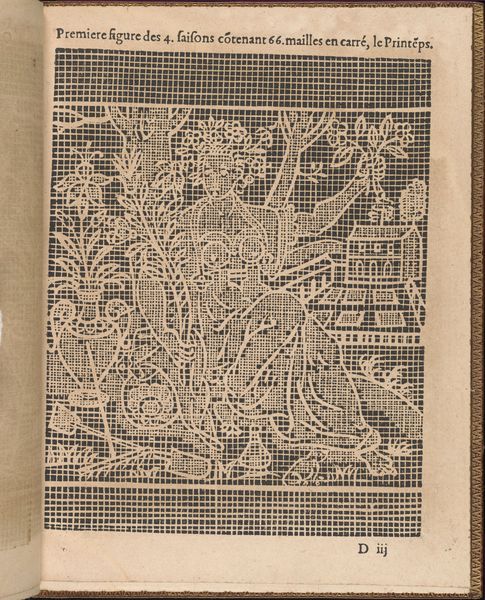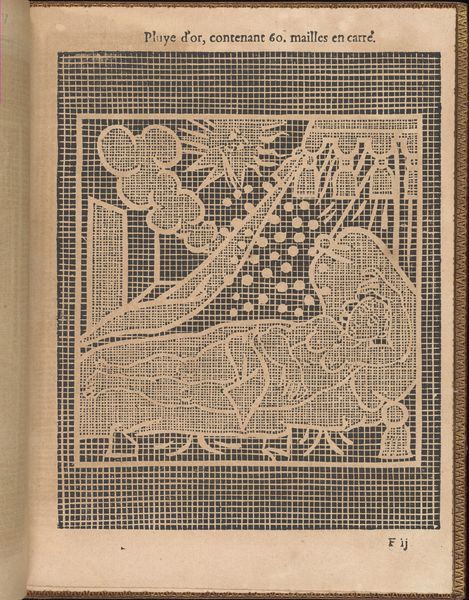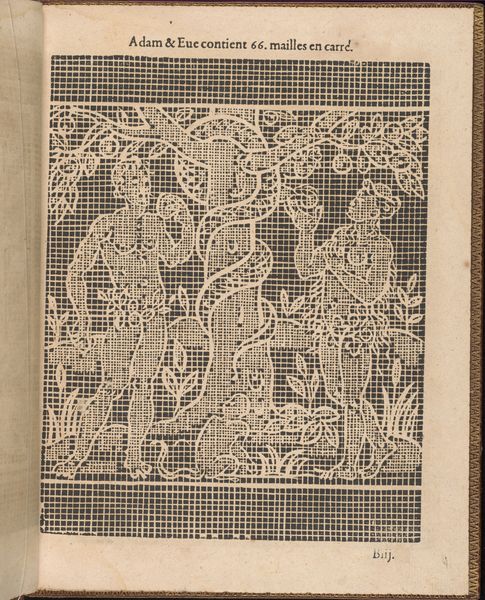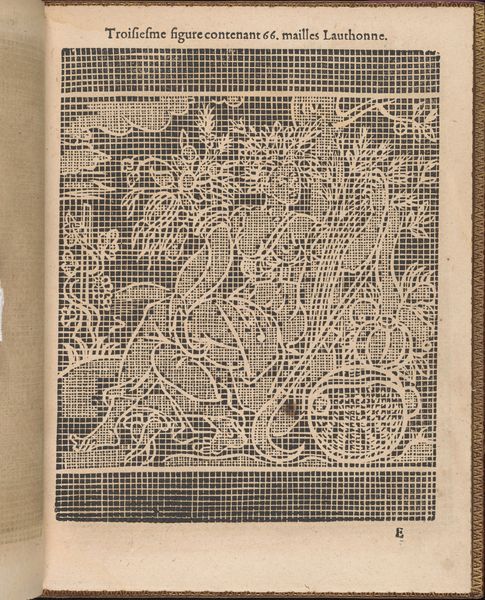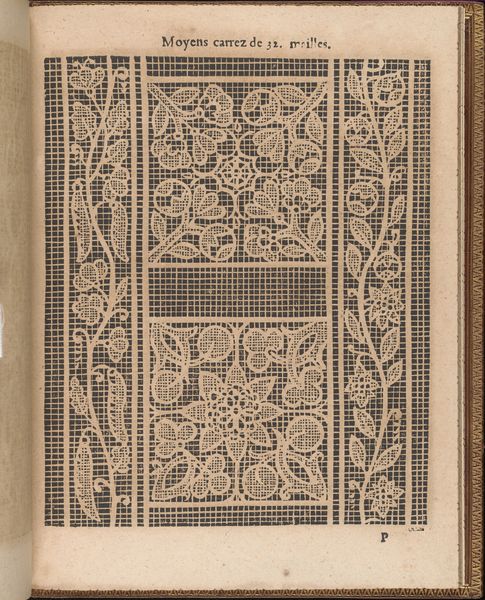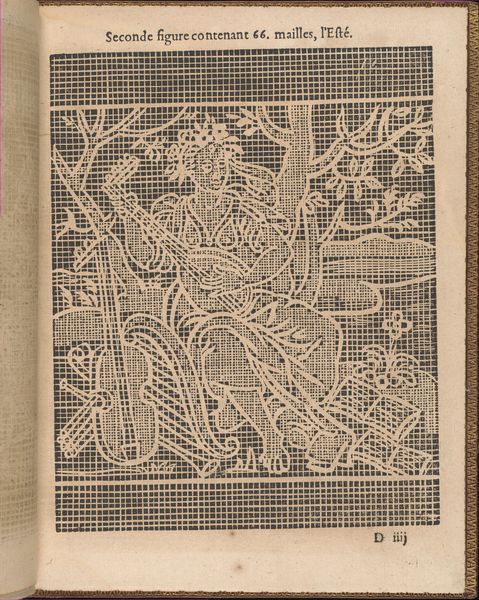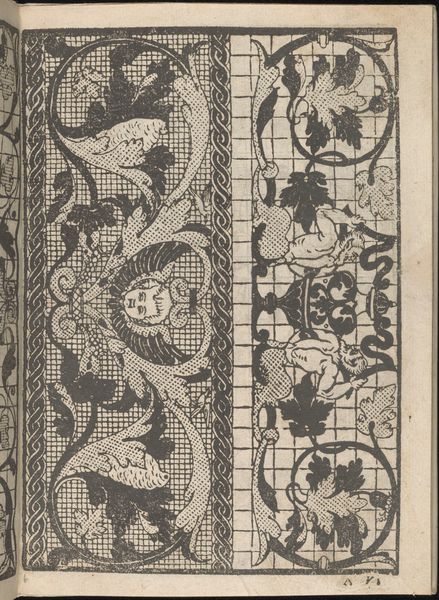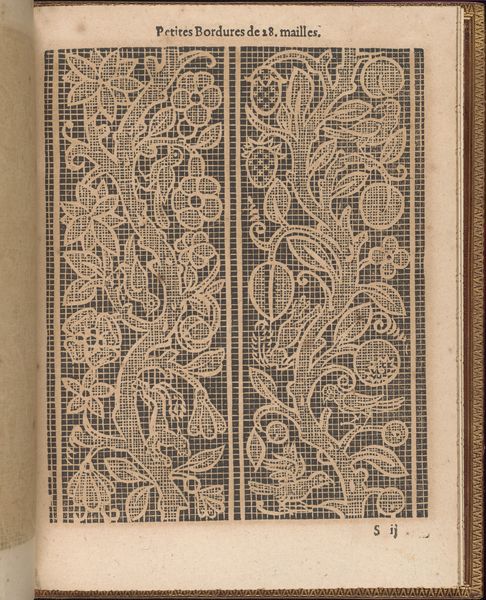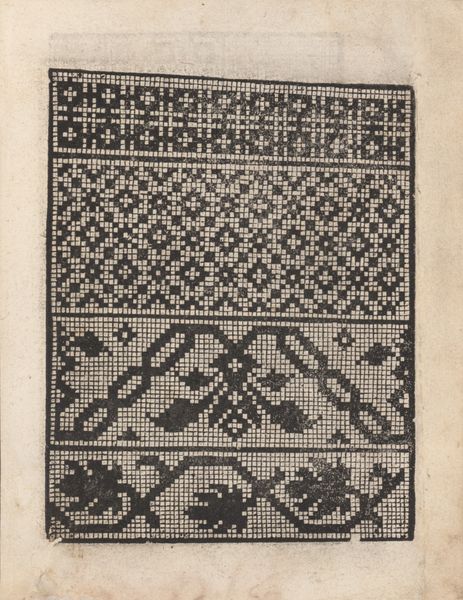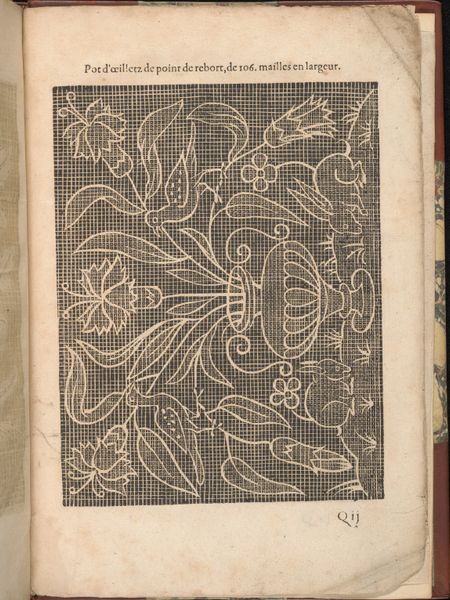
drawing, print, engraving
#
drawing
#
narrative-art
# print
#
bird
#
figuration
#
11_renaissance
#
line
#
northern-renaissance
#
engraving
Dimensions: Overall: 9 1/4 x 7 1/16 in. (23.5 x 18 cm)
Copyright: Public Domain
Curator: This is a page called "La Pratique de l'Aiguille, page 8 (recto)" created in 1605 by Matthias Mignerak. It’s currently held at the Metropolitan Museum of Art. The medium is engraving. Editor: It's incredibly detailed! It almost looks like lace itself. The whole image has a delicate, gridded pattern, and it contains some familiar scenes. What can you tell me about it? Curator: Looking at this engraving through a materialist lens, I'm most struck by its connection to production. This wasn't conceived as "high art" in the modern sense. It's a pattern book. Consider the labor involved—both Mignerak's, and the lacemakers who would've used this as a guide. The grid is literally embedded in the image's conception, directing labor towards the creation of very specific material output. Editor: So, this was meant to be a tool, not just an image to admire? Curator: Exactly! It directly dictates a production process. Look closely at how the depiction of the Annunciation here seems to serve more as a pretext. Note also the bird. In other words, narrative, religious and purely decorative subjects all are translated into lacemaking patterns and instructions. Think about the consumption cycle it promotes – the commission for such religious object, the social rituals involving these items… Editor: It’s interesting how you focus on how this bridges the gap between art and craft. Curator: And further blurs any potential hierarchy separating them. This book elevates needlework, presenting it not just as a domestic skill but a legitimate artistic and economic practice, and diminishes history painting into becoming patterns or decorative pieces.. What impact do you think that had on women specifically, the primary makers of lace? Editor: I never really considered how it would have supported and showcased their skills that would be appreciated, and economically valuable. So much more than simply appreciating its surface beauty. Curator: It prompts us to rethink conventional ideas about art production and value during that time and highlights how the economic considerations may influence artworks in so many unexpected ways. Editor: I’ll definitely see these kinds of images differently now.
Comments
No comments
Be the first to comment and join the conversation on the ultimate creative platform.




